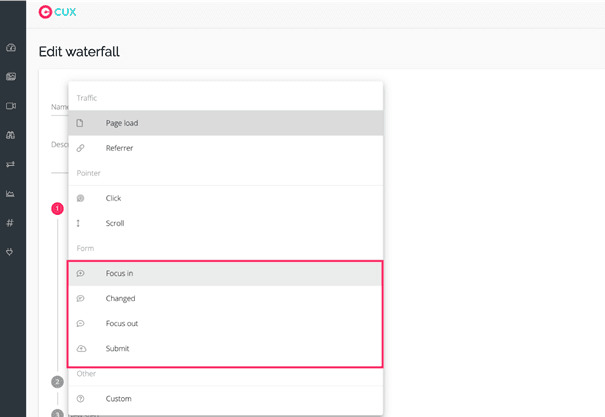December 4, 2025
6 min read
Stop measuring vanity metrics: The new way to track e-commerce conversion
In reality, our users do not use websites linearly. They open many tabs, they invent their own ways of using the solutions we propose.

Modern e-commerce conversion optimization requires moving beyond linear funnels to analyze the real conversion path users take. By tracking specific events and analyzing user behavior, you can find and fix the hidden leaks costing you sales.
The most important realization is that effective customer journey optimization must be based on real behavior patterns, not assumptions. Thanks to this, in addition to increasing sales, we will find ourselves on the right track to building a strong relationship with users, based on showing – so-called – digital empathy towards them. We provide understanding and support in those places that require it, in opposition to bombarding them with functionalities and options only because the competition offers something similar or the agency recommends this approach.
Where to start? Preferably from the beginning, i.e. from setting up our Conversion Waterfalls so that we can begin our user behavior analysis using precise, event-based data.. How, you ask? This article will guide you through this process almost step by step.
Track events to build Conversion Waterfall
Use the right mouse click to choose the “Inspect element” function. Then, in the console that appears at the bottom of the screen, you will see the HTML code appropriate for this element.
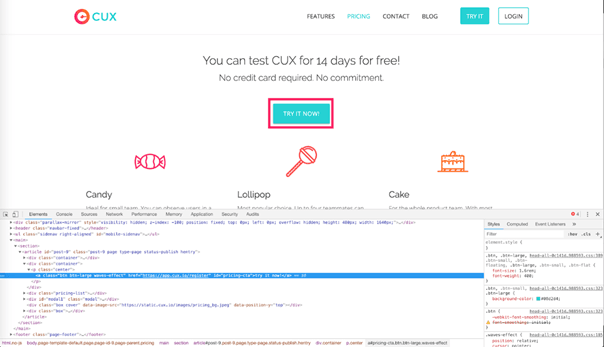
What you need to find is the class or parameter ID of the item and copy the XPath – the path to this place. After pasting into the Waterfalls configurator, the application itself will prompt the element we want.
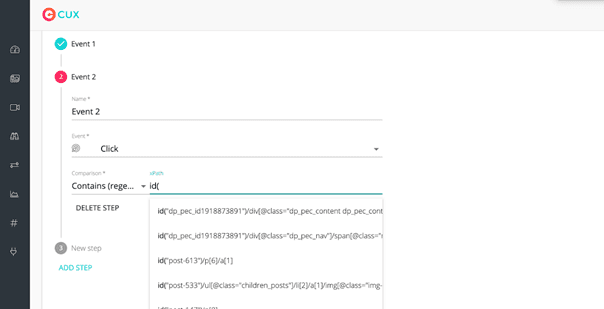
By defining as many events and steps as you need, you will create your own Waterfall.
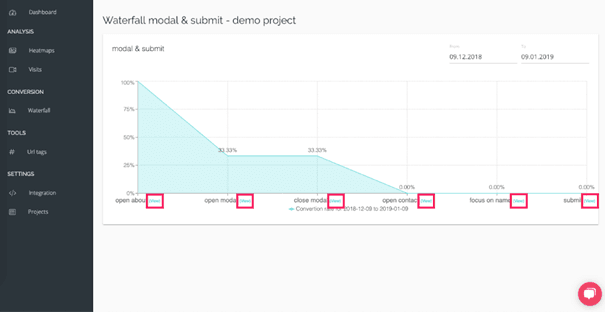
Now you can observe where exactly are the drops within the conversion path. You can finally see the numbers, but what you still need to be completely happy is the answer to the question: why do people drop off? To try to find out, just use the “View” option, and in the next view, you will get a list of visits in which users have not moved on to the next step.

Mapping non-linear paths to the cart
Remember that the sales path for your product is not necessarily the one you designed. If you want to sell more, find out how your customers want to buy.
Is there only one path leading to the destination? Highly unlikely. That is why it is best to check the entire context first and then take a closer look at the places where we see “drops”. You can do that with a bit of help of conversion rate optimization tools. With their help you can test different scenarios. And remember, don’t stop at just one. Your task is to narrow down the analysis to one goal and study individual places/ events in the project in detail.
Let’s see an example of a conversion scheme analysis.
/ main → / category → / product → / basket → / thank you for your purchase
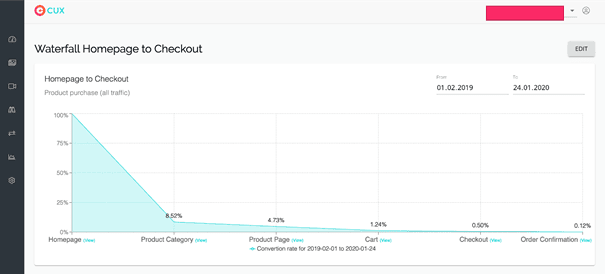
We’re exploring the basic “classic” path. Disclaimer: this example is for the purpose of orientation and should not be the basis for drawing conclusions and recommending specific changes.
If you know that over 90% of your traffic comes from campaigns or marketplaces, you can skip this step and start from step 2.
/ product → adding to the cart → / basket → / thank you for your purchase
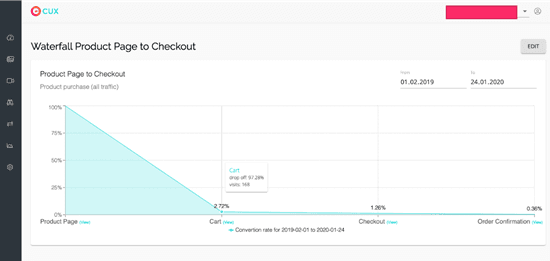
The path starts with the product, you check how customers arriving via the campaign or returning to specific products are consuming your website. You check how clients use the basket in your store – compare information on how many people add products to the basket, and compare it with information on how many actually make the purchase.
Most of the e-commerce customers come to us with a request to analyze why they have so many “abandoned” baskets. They focus on the analysis of the basket page and the finalization of the transaction because this stage is most important to them. In many cases, however, we are quickly able to verify whether we are dealing with abandoned baskets at all, or whether customers simply lack purchase intent, using the cart as a wishlist. This is a common pattern found in e-commerce product page optimization. Often, customers leave selected products for later (sometimes even several sessions later), choosing those that they want to compare with other products available online. E-commerce conversion rate optimization starts with understanding the customer's buying journey.
/ basket → placing an order → / thank you for a purchase

For the “placing an order” step, we want to have a look at the order form. If we have a simple, one-step form, we can check the “focus in” event for each field at this stage. If the form consists of many sections, you should first examine only the first fields in each of them to find out which section is the biggest problem and then go into a more specific analysis.
If you notice a significant drop in the form, you still need to deepen the analysis to determine events such as “Focus in”, “Change”, “Focus out”. If users do not fill in one of the fields, they most likely have objections related to privacy and data security. If in one of the fields we note an attempt to complete (“Change”), but the user hasn’t moved to the next step, this may mean that we have problems with validation or formatting. In that case you need to look at the form from its technical side. ** The "Validation" Trap**: You see a high drop-off at the "Phone Number" field. Standard analytics just show the exit. By analyzing the "Change" event in CUX, you see users typing their number, getting a validation error because they used spaces or dashes, trying again, failing, and leaving. This isn't a lack of interest; it's a strict validation rule killing your conversion rate. Changing the form to accept any format is a quick win.
Last, but not least - analyze customer behavior
To get the most important things to remember, below you will find a list of the most common mistakes made when analyzing customer behavior and some practical tips that will be useful during the event-based analysis.
The most common mistakes:
- Viewing recordings of individual sessions (not visits) and making conclusions of customer paths and behavior based on those individual sessions
- Assuming that users use the internet in a linear way – that they go through individual URLs without opening many tabs, without comparing products
- Concluding only on the basis of numbers, without an understanding of why this is happening
- Implementing solutions that have worked well for others – instead of observing your own users
- Analyzing only the last stage of the process – without an understanding of the drops along the funnel path.
- Assuming that the problem is always at the end of the funnel (e.g. abandoned baskets)

